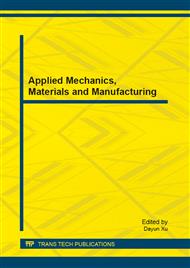p.335
p.340
p.346
p.350
p.355
p.362
p.367
p.375
p.382
Flow Simulations for NASA CRM Wing-Body-Tail with Implicit Hole Cutting Method
Abstract:
The overset grid method eases the time of grid generation and provides great flexibility to handle topologically complex configurations, but the generation for a system of overlapping grids is an expensive and daunting task. Based on a hierarchical overset grid strategy, implicit holt cutting method developed to ensure grid connectivity within a framework suitable for multi-grid. Viscous flows around NASA CRM wing-body-tail configuration were simulated by an in-house CFD solver called Exstream. Compared with CFL3D and OVERFLOW, The results of Exstream show that: the smooth transition of surface pressure contour in the overlapping region indicates that the interpolation between the overlapping grids can offer sufficient accuracy, and it demonstrates the accuracy and efficiency of implicit holt cutting method and Exstream solver. The lift data matches well with those of CFL3D, OVERFLOW and Exstream and follows a nearly linear trend as angle of attack varies from 0.00 to 3.00 deg. In addition, there is a flow separation bubble near the trailing edge of wing-fuselage junction.
Info:
Periodical:
Pages:
355-361
Citation:
Online since:
August 2013
Authors:
Price:
Сopyright:
© 2013 Trans Tech Publications Ltd. All Rights Reserved
Share:
Citation:


